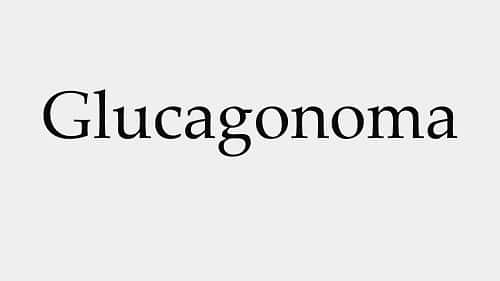What is glucagonoma?
Glucagonoma is a rare neuroendocrine tumor that originates almost exclusively from the pancreas. More specifically, glucagonoma originates from the alpha 2 cells in the pancreas. It is estimated that glucagonoma accounts for 1% of all neuroendocrine tumors and 5–10% of neuroendocrine tumors that occur in the pancreas. Around 75 to 80% of glucagonomas begin in malignant form. In cases of malignant glucagonoma, there is often an autonomous secretion of glucagon by the glucagonoma tumor cells, which is known as glucagonoma syndrome. Glucagon is a type of hormone synthesized by the islets of Langerhans. Acting antagonistically to insulin, it promotes the breakdown of glycogen to glucose by the muscles and liver.
What are the clinical signs and symptoms of glucagonoma?
Characterized by an excessive synthesis of glucagon, glucagonoma may impact many aspects of health. Glucagon counters the actions of insulin to inhibit glucose storage by the muscles and liver. When there is an abnormally high level of glucagon, glucose in the blood vessel(s) will not be stored, leading to an elevated blood glucose level. This results in diabetes-like symptoms, such as hyperglycemia (high blood sugar). Other symptoms of glucagonoma include deep vein thrombosis (blood clots in the legs); unintentional weight loss; dermatitis or skin rash on the feet, buttocks, belly, and/or face (which will often be crusty / filled with pus); diarrhea; frequent urination at night; and excessive hunger and thirst caused by high blood glucose.
What are the risk factors of glucagonoma?
The exact cause of glucagonoma is not known. Some risk factors may increase the risk of glucagonoma. For example, a family history of multiple endocrine neoplasia type 1 (MEN1) or Mahvash disease can increase a person’s risk of developing glucagonoma. MEN1 is a hereditary tumor predisposition syndrome, while Mahvash disease is an extremely rare cause of familial pancreatic alpha-cell glucagonoma and hyperplasia that is caused by inactivating mutations in the GCGR gene. About 80% of glucagonomas are sporadic. Glucagonoma may develop regardless of risk factors.
Treatment
The treatment for glucagonoma typically involves the removal of tumor cells. At the same time, it is important to treat the effects of excess glucagon in the body. The treatment method is determined based on the stage of the disease. At the early stage of glucagonoma, somatostatin analogs (SSA), such as octreotide or Sandostatin (Octreotide) injections, can be used to stabilize and counteract the effects of glucagon. Medications such as Octreotide are particularly useful in alleviating the effects of glucagon on the skin, which includes skin rashes. They also help prepare patients for surgery. Other supplements, such as zinc, amino acids, steroids, and antibiotics, have been shown to alleviate serious skin rashes. For patients who have glucagonoma and secreting metastasis, peptide receptor radionuclide therapy (or PRRT) is recommended as the first line treatment.
If there is substantial weight loss, an IV infusion may be used to restore the body weight. As part of the pre-operative preparation, patients may need to receive total parenteral nutrition (TPN) for a period of time. Insulin, on the other hand, can be used to treat hyperglycemia. While on treatment, it is recommended to monitor blood sugar levels closely. A blood thinner or an anticoagulant may be prescribed as needed. This helps to reduce the risk of deep vein thrombosis, which will help prevent blood clots from forming in the legs. The next step of the treatment is tumor removal.
If you do suspect that you may have this condition, speak to your doctor about treatment options.
Doctor’s Recommendation
—
Disclaimer: Please note that the contents of this community article are strictly for informational purposes and should not be considered as medical advice. This article, and other community articles, are not written or reviewed for medical validity by Canadian Insulin or its staff. All views and opinions expressed by the contributing authors are not endorsed by Canadian Insulin. Always consult a medical professional for medical advice, diagnosis, and treatment.



